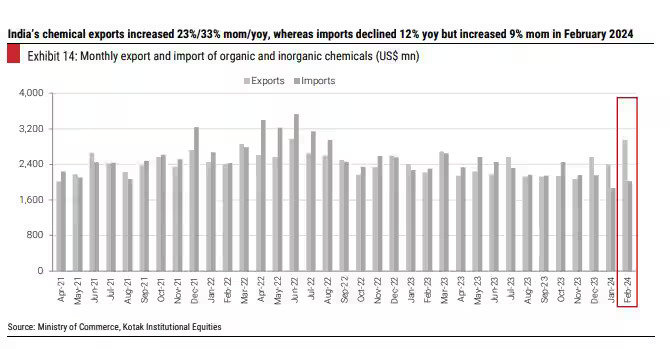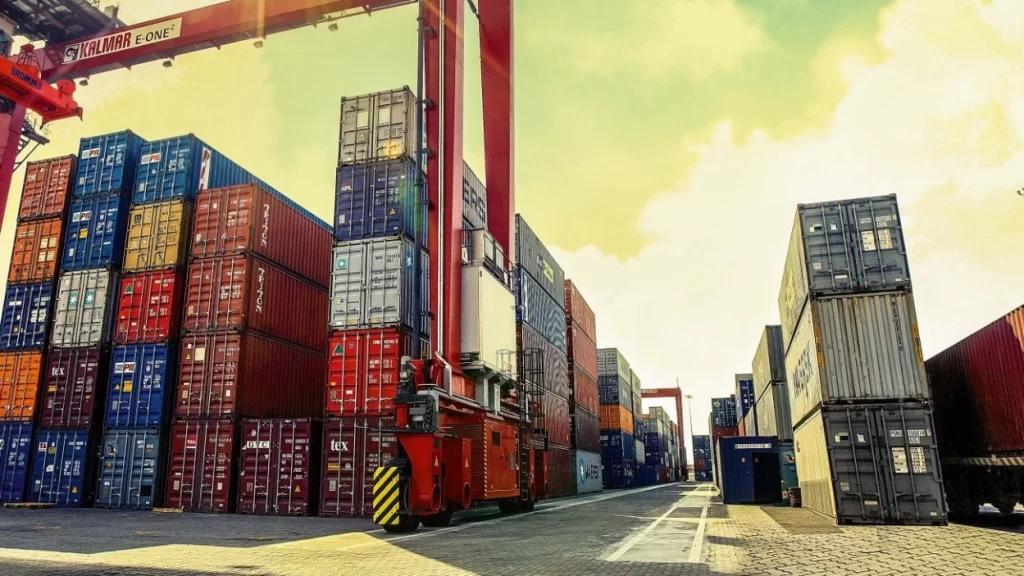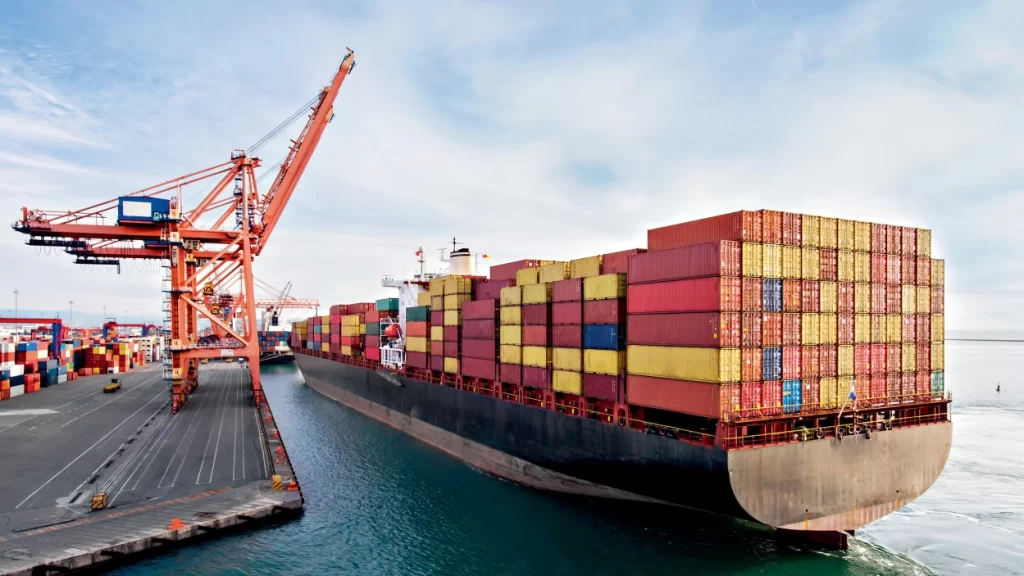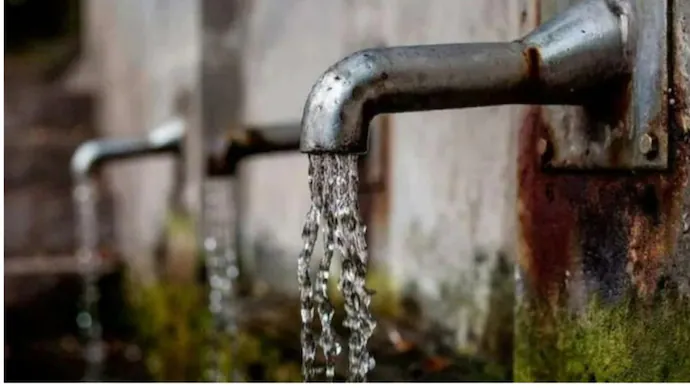India to be $850-$1,000 billion chemicals hub by 2040
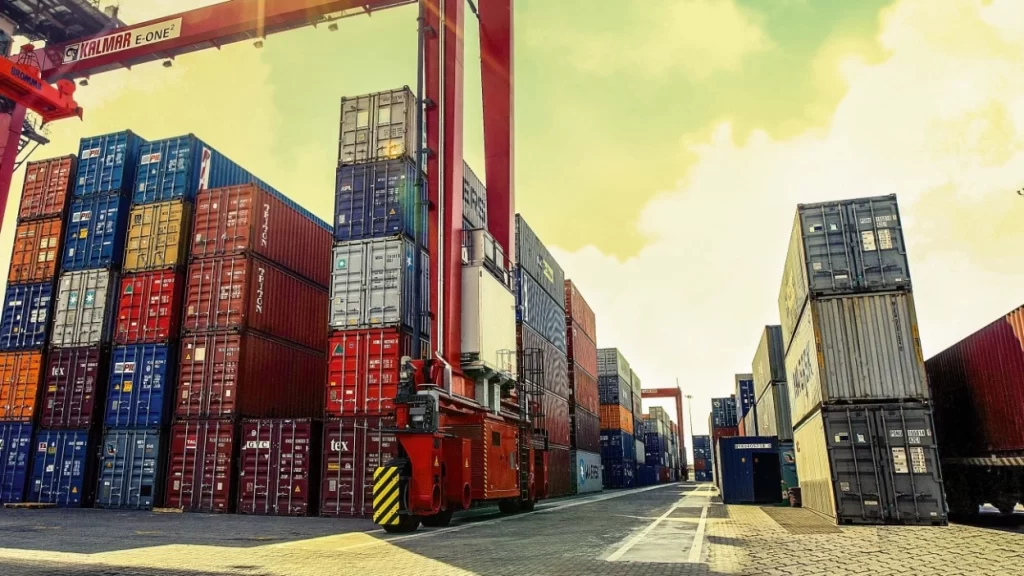
In the fastest-growing segment among the three main segments of the chemical sector, the net exports of specialty chemicals are expected to rise around 10 times.
India is expected to become a $850-1,000 billion chemicals market by 2040, taking a 10-12% share of the global chemicals market, growing at 9-10% annually from the $170-180 billion industry in 2021.
As per a study by the Indian Chemical Council (ICC) and McKinsey & Company, while exports are projected to grow at a CAGR of 9.5-10% to $140-145 billion by 2040, imports are likely to match growth at a CAGR of 9-9.5% to $180-185 billion. Thus, India’s current chemical trade deficit at $9-10 billion is expected to balloon to $40-42 billion by 2040.
In the fastest-growing segment among the three main segments of the chemical sector -- inorganic, petrochemicals and specialty -- the net exports of specialty chemicals are expected to rise around ten times, from about $2 billion in 2021 to $21 billion. Almost 80% of the exports in the segment would come from four sub-segments -- agrochemicals, dyes and pigments, cosmetics and personal care, and food ingredient chemicals. Due to limited cracker infrastructure and scarcity of key feedstock and minerals, both petchem and inorganic segments will have a trade deficit. At $41 billion, petchem’s deficit will be almost twice as large as inorganic's $21 billion.
Agrochemicals in India is currently a $5.5 billion market, growing at a CAGR of 8.3%. By 2040, it is expected to account for almost 40% of India’s overall chemicals exports and nearly 13% of the global ag-chem market. Food and Feed Ingredient chemicals, constituting flavours and fragrances, food and feed additives, and nutraceuticals, is a $3 billion market in India, growing at a CAGR of 7-9%.
Imports in petchem would likely be fragmented across products, with the two largest imported products, PVC and Polypropylene accounting for just 13 and 8% of imports, respectively. Exports in the segment, meanwhile, will be driven by the C8 (Paraxylene) and C6 (Benzene) building blocks and bulk polymers PP, LLDPE and HDPE. In the Inorganic segment, imports will be driven by phosphorus, potassium and titanium (together accounting for 70% of total imports) and exports by carbon black, sodium and titanium (together accounting for 65% of total exports).
Growing at a CAGR of more than 10%, fluorine is expected to become a $4.2 billion market by 2040. Its growth will be driven by rising demand from two of its main end-use industries like pharma and ag-chem. Growing at a CAGR of nearly 10%, sodium and caustic could become a $13 billion and $11.5 billion market, respectively, by 2040, says the study.
The study says that benchmarking the sector against six global chemicals clusters—China, Germany, Indonesia, Saudi Arabia, South Korea, and Vietnam across 24 variables shows that though India is more or equally competitive on most counts, other countries have a competitive edge over India in a few crucial respects – like feedstock availability, limited availability of R&D talent for chemicals companies, environmental clearance and land availability.
According to a report by the Comptroller and Auditor General of India, ECs in India are delayed nearly 9 out of 10 times, with the average period of delay being about 6.5 months. This becomes a source of significant capital drain for Indian chemicals manufacturers, who are often forced to wait for months, sometimes even years, to get clearance to initiate production in a finished facility, says the study.
VTAR provides various chemicals for the industry.
Sources: From various excerpts from the Internet.

